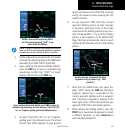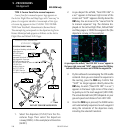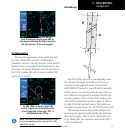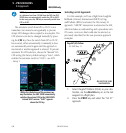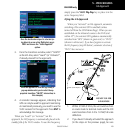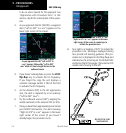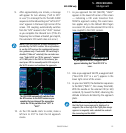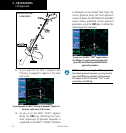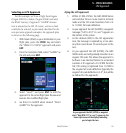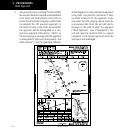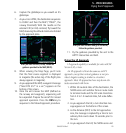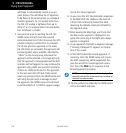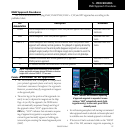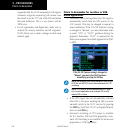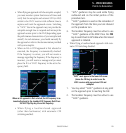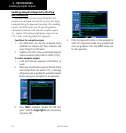
5 - PROCEDURES
113
190-00357-00 Rev E
Selecting an LPV Approach
For this example, we’ll use a flight from Eugene
Oregon (KEUG) to Salem, Oregon (KSLE) and select
theRNAVrunway31approach.“GLORR”intersec-
tion is selected as the IAF. Of course, vectors-to-final
could also be selected, as previously described for the
non-precision approach examples. An approach plate
is shown on the following page.
1. With Salem (KSLE) as your destination in your
flight plan, press the PROC key and select
the “RNAV 31 Z (GPS)” approach and press
ENT.
2. From the transitions field, select “GLORR” as
the IAF and press ENT.
3. Select “Load?” and press ENT to add the
approach to the active flight plan. Review and
execute the modified flight plan.
4. Go direct to GLORR when cleared “Direct
GLORR” for the approach.
Flying the LPV Approach
1. Within 31 NM of KSLE, the GNS 500W Series
unit switches from en route mode to terminal
mode and the CDI scale transitions from 2.0
to 1.0 NM, full scale deflection.
2. As you approach the IAF (GLORR), a waypoint
message (“Left to 314° in x sec”) appears on
the bottom of the screen.
3. As the distance (DIS) to the IAF approaches
zero, the message is replaced by a turn advi-
sory that counts down 10 seconds prior to the
turn.
4. As you approach the FAF (LOTKE), the GNS
500W-series unit will gradually transition to an
angular CDI scale. This allows the approach to
be flown in an identical fashion to a standard
Localizer or ILS approach. At 2.0 NM from the
FAF, CDI scaling is tightened from 1.0 NM to
the angular full scale deflection (typically the
angular full-scale deflection is 2.0°, but will be
as defined for the approach).
As you approach the FAF (LOTKE), a waypoint
alert (“Next DTK 313
°
in x sec”) appears in the
lower right corner of the display reminding
you to begin the turn.
LPV Approach



